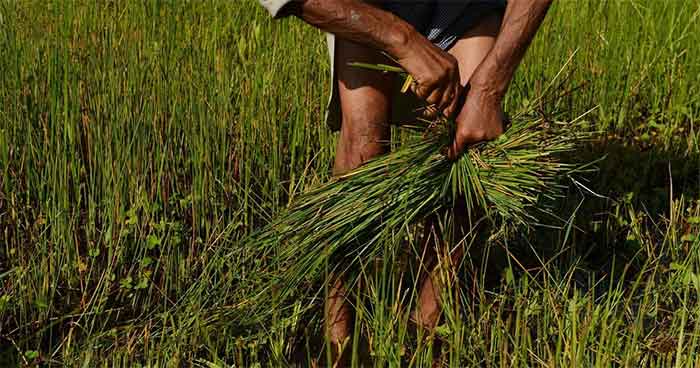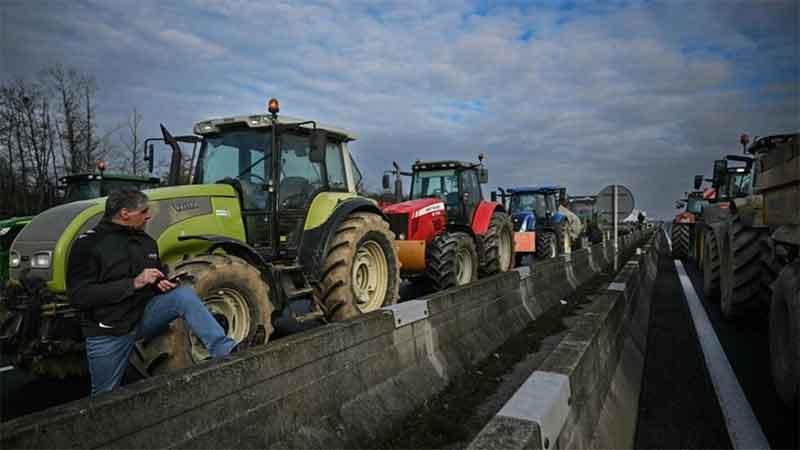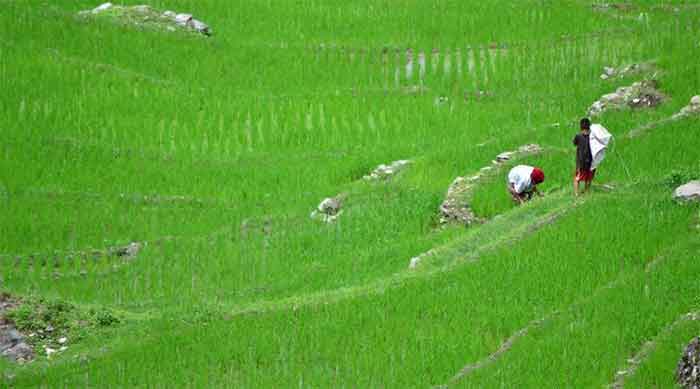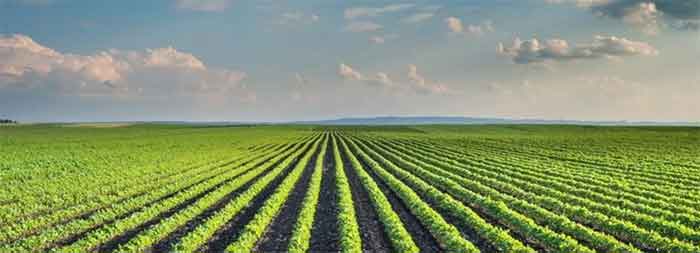
In many parts of the world there is a yearning on the part of farmers to break free from the increasingly exploitative grip of big business interests trying to dominate farming and food systems. As a result, despite the very worrying reality of the increasing domination of big business in many countries led by the USA, there is also a highly welcome increase in activities for exploring alternatives and reviving forgotten ones.
In India also the farmers’ movement has led to more exploration and thinking along these lines. After all if we criticize what is wrong on the part of big business interests and governments colluding with them, we should also be able to present in clear terms the various alternative paths of development that exist.
Another reason why this debate is picking up is due to the growing seriousness of climate change and the search for ways and means of climate change mitigation and adaptation. We need farming methods and programs which can contribute to checking climate change and can also increase the capacity of farmers to cope in a better way with the fast emerging challenges of more weather extremes and more unpredictable weather. For these new reasons as well as earlier ones there is clear need for a more decentralized approach.
What is more it is increasingly realized that the efforts of climate change mitigation and adaption in agriculture and related sectors should be well-integrated with the welfare and protection of sustainable livelihoods of small and medium farmers in India as well as in other parts of the world. The solutions that come should of course be ecologically protective ones, but in addition the solutions should be low-cost solutions which also increase the self-reliance and resilience of rural communities instead of making them more dependent on outside forces and uncertainties .
In this larger context, ‘A silent rice revolution – a specific plan of action for increase in productivity of rice’ formulated by Dr. R. H. Richharia, one of the most eminent rice scientists, deserves special attention as it meets all these requirements. Its most important feature is that it is based in indigenous rice varieties . It promotes self-reliance and resilience of farmer communities, and is based on a very decentralized approach. It is ecologically very protective and very useful from the point of view of climate change adaptation and mitigation.
This specific plan of action was formulated by Dr. Richharia at the request of the Prime Minister’s office in 1983-84. However following the tragic assassination of Mrs. Indira Gandhi in 1984 somehow the plan got neglected. Dr. Richharia who lived and worked independently in Bhopal at that time soon suffered great health deterioration in the Carbide gas leak disaster and could not follow up the matter on his own. However when this writer met him well before his death he still had hopes that one day this document will prove very helpful for rice farmers and farming.
Dr. R.H. Richharia was for several years the Director of Central Rice Research Institute (CRRI-Indian’s more important centre of rice research) from where he retired in 1967. He was first recalled to head a national task-force on rice breeding , then to set up a rice research institute in Raipur and then finally he was contacted by the Prime Minister’s office to prepare a plan for improving rice yields.
In the rice-plan prepared by Dr. Richharia first he identifies the factors which have retarded the increase in rice productivity despite so much increase in investments in the form of fertilisers, pesticides, irrigation, research, extension etc. Then he presents his plan. Dr. Richharia’s plan has four basic components –
(1) rice development to be based on the rich diversity of indigenous rice varieties which should be saved on farmers’fields and a lot of priority and attention should be given to this aspect;
(2) a highly decentralised extension approach;
(3) large-scale adoption of clonal propagation technique to spread improved indigenous varieties and
(4) very high levels of involvement of rice farmers with special emphasis on encouraging those farmers who have special skills and interest in protection and promotion of diverse indigenous varieties.
According to Dr. Richharia (all quotes from the plan) “The main constraint has been the hurried introduction of the undesirable new rice material, the HYVs (dwarfs) on which we based our strategy, forgetting at the same time unexpected drought situations, under which the HYVs lowered the yields. In addition, under heavy fertilization and irrigation the HYVs proved to be susceptible to diseases and pest which cannot be controlled easily thus again pointing towards reduction of yield. Further, unlike wheat and sugarcane, the concept of ‘wider adaptability’ in rice has a limited scope for application (not exceeding 10 per cent of the rice area). This has naturally led to local preferences of different types of rices and socio-economic adjustments, developed in course of time.” So, Dr, Richharia concludes, when the base is itself weak (meaning the new rice material) a mansion, built on it must collapse.
At another place in the plan he writes “The most immediate and major cause can be attributed to frequent replacements of the adapted rice varieties in a locality, partly or fully. This is because the agro-ecological balance has been disturbed in the environment in respect of the existing germplasm which had been built up in course of time for centuries by the natural process of empirical breeding and selection establishing ecological balance in different environments, what in modern times can be interpreted as ‘ecological breeding’ .”
Fortunately, indigenous high-yielding varieties adapted to local environment are available in the country. In a survey carried out in Madhya Pradesh between 1971-74, 8 per cent of the indigenous rice types were observed to fall under the category of high yielding types, fixing the minimum limit of 3705 kg/Ha.
In view of this there is a need to redefine ‘HYVs’ which hitherto have been officially identified only with the exotic dwarf fertiliser – responsive varieties.
At a national symposium on increasing rice yields in Kharif (Monsoon season) held at the CRRI, Cuttack on Feb. 8-11, 78, the rice workers agreed that “the time is now ripe to redefine the term High Yielding Variety (HYV) as a high yielding variety for a particular environment possessing suitable plant-type characters for that condition which may not be suitable for other environments. “A (rice) variety irrespective of its plant and / stature giving significantly higher yield over the local or regional average yield under farmer’s condition may be defined as a high yielding variety (HYV).”
To emphasise the point further, the Directorate of Rice Development, Govt. of India, had issued a paper entitled ‘Need for a National Policy on Rice’ (1972) and concluded, “The new varieties of rice should be as good as the (current varieties) older ones in local adaptability and some characteristics but not inferior in any character. It is our experience that when we try to recommend a variety which is a compromise between a high yield and some other character in which the local (older) varieties are superior that we run into trouble. We should not over-emphasise yield but should insist upon a minimum aroma and cooking quality as rice is the only cereal which is directly consumed without much change in the form of its grain.”
Dr. Richharia recommends strongly, “It is high time that the country’s 1964-65 breeding programme which nearly stands suspended to exploit the rice indigenous rice germplasm, is also resumed in the light of the observations, recorded above, when about 445 improved varieties, bred for specific stress situations, showing environmental resistance to diseases and pests were available, and would be still available, in the country. It is not too late and the strategy formulated in this programme, mainly based on our rice genetic resources may be accepted which also contemplates that the indigenous germplasm in its hybridized form (hybrid rices) has also bright future to enhance rice productivity.”
Selection work (genetic upgrading) with indigenous rice types was resumed by Dr. Richharia in 1968 after leaving Cuttack “About 1500 improved types (improved versions) and eleven composites were developed and made available by 1978 selected from about 7800 principal indigenous rice cultivars. As approach was to release this hidden production force which remains unnoticed, unrecognised and confined to certain localities with individual growers.”
“For high yield potential genetic upgrading of their adapted rice varieties (indigenous rice germplasm), with certain manipulation, such as the evolution of new hybrids and exploiting hybrid vigorous utilizing pure material of local types, is the only course left for speedy recovery of loss, to stabilise rice production at a higher level, instead of waiting to replace our rice by other rice material of doubtful nature which may or may not get adapted to stabilise yields in the environments under which rice grows in variable situations in India.”
In the area of research as well as extension, Dr. Richharia recommends a highly decentralised approach. This, he emphasises, is inherent in the nature of the rice plant. To quote, “If we were to think of a single characteristic feature of the rice plant which yields food for millions, it cannot be anything else but its variability in the form of thousands of its cultivars, spread in India and in other rice growing belts of the world. This is because of the rice plants flexible genetic make-up and mutational power of adaptation.” So he recommends the establishment of a wide network of “adaptive rice centres” in all rice growing areas.
“The adaptive rice centres will be the custodian of all local rice cultivars in respective localities, assembled immediately, supplemented if necessary, by the already available materials of the locality at different research centres. They will be maintained under their natural habitat to safeguard the future. They will be known as local treasuries of rice germplasm, (a term suggested by Dr. Frankel of Australia).”
The function of the centres will be : –
(a) To maintain the evolved rice genetic material for future studies and use as it is practically impossible to retain it in its original form at a central place in India or abroad. It can only be maintained in its original condition at its natural habitat only seeking help of the rice growers themselves.
(b) To educate the young farmers to appreciate the value and importance of their own material adding new ones as their hobby.
On the basis of his wide experience Dr. Richharia says “Invariably I found in rice areas several rice growers taking keen interest in their local rice varieties as they are very much absorbed in them and they have all praise for them, so much so that they trace back the history of individual rice varieties to their ancestry with their utility and such selected and devoted rice farmers will be put in charge of the centres. I also observed that some of them identify their rice varieties in their own way (not in terms of the modern knowledge of Botany) which amount to thousands. This inherent and intuitional facility of selection and maintenance of thousand of rice cultivars gradually being accumulated and descended upon for unknown centuries, ever since the rice first originated must be preserved and exploited for the advantage of the present generation and to ensure the safety of those still unborn.”
“On the practical side a beginning may be made in M.P. where upgrade material already exists in the form of about 1500 improved types made from growers’ own rice cultivars which can be distributed in different centres for work to be started immediately, to obtain advantage as early as possible and to prepare the hybrid material for the next season.” On the basis of his experience in Madhya Pradesh, Dr. Richaria stresses that women will prove to be the most important link in introducing this technology. At Adaptive Rice Research Centre in Baronda, Dr. Richaria noticed that women workers absorb new methods and ideas very quickly. Here he had specially promoted some women workers as supervisors for managing the germplasm of over 17000 rice cultivars in the field and the practice of clonal propagation.
For rapidly spreading improved upgraded varieties and for exploiting their hybrid vigour the clonal propagation technique can give very good results.
“It will also be demonstrated that the healthy seeds, obtained by clonal propagation for a full crop of rice to follow, give nearly 20% higher production for any rice variety.” Further hybrid clones for exploiting hybrid vigour can be obtained. Hybridization work will be carried out by the trained field workers of the adaptive centres.
“Whereas clonal propagation in rice as a mean of raising pure seeds to offer 20 per cent higher production and the extension of this technology to exploit hybrid vigour to obtain 50 per cent increased yields, remain unexploited, a great discovery of immense value is left unheeded, in the form of 19 thousand rice cultivars coupled with their 1500 improved versions representing intense variability, assembled from the least understood rice areas of M.P. (Chattisgarh, Bastar, Abhujmal tracts etc. inhabited mostly by tribals.”
In a big part of the country the rice crop is ruined by drought conditions and in another significant part by flood conditions. In this context Dr. Richaria’s plan is all the more invaluable as it incorporates resistance to floods as well as drought conditions, not to mention disease and pest invasions.
Dr. Richharia’s documents of the days of his work at Raipur mention the several drought – resistant indigenous varieties discovered in the course of field – work in Chattisgarh region, and above all the immense diversity of the rice varieties grown. A special advantage of this in distress situations such as drought is that while some varieties suffer, some survive and so yield doesn’t go below a certain level. Regarding flood situation the clonal propagation method offers special advantages. It has been demonstrated that rice clones show resistance to submergence.
Dr. Richharia further expressed his support for organic farming and several local practices of farmers. He wrote that under this plan “the agronomic practices such as biasi, rotation of crops, mixed cropping will remain common and will not be disturbed ,emphasis being on the use of organic manures, such as compost, green manure, neem cakes and oil cakes etc.”
Dr. Richharia attached 17 documents based on his earlier research to support his plan while submitting it to the then Prime Minister. In addition he mentioned his Encyclopedia of Rice Cultivars on which he was still working. He also offered his services on an honorary basis for implementing this plan.
However the collections of improved rice varieties he mentioned (mostly arising from his own work and the work of his colleagues) may not be available to the same extent today compared to the time when this plan was prepared. Similarly the knowledge of indigenous varieties in villages may be comparatively less now. However this is all the more reason why the implementation of this plan should not be delayed any further as with the passage of time the neglect and loss of indigenous varieties may make such tasks and initiatives even more difficult.
In fact more delay there is implementing such programs the more difficult it will be to implement these programs as the most important base for such programs in the form of highly diverse indigenous varieties is being eroded all the time, or else being stolen in the garb of international cooperation programs, which often take the form of robbery in the name of aid and development. Therefore difficulties which have appeared now in the form of loss of indigenous farm varieties as well as reduction in traditional wisdom relating to them should not stand in the way of implementation of such programs or their basic approach. Rather this should impart a sense of urgency to the very important task of protecting and saving the diversity of indigenous varieties in field conditions.
Bharat Dogra is a journalist and author. His latest books include Man over Machine and Protecting Earth For Children.
GET COUNTERCURRENTS DAILY NEWSLETTER STRAIGHT TO YOUR INBOX

















































